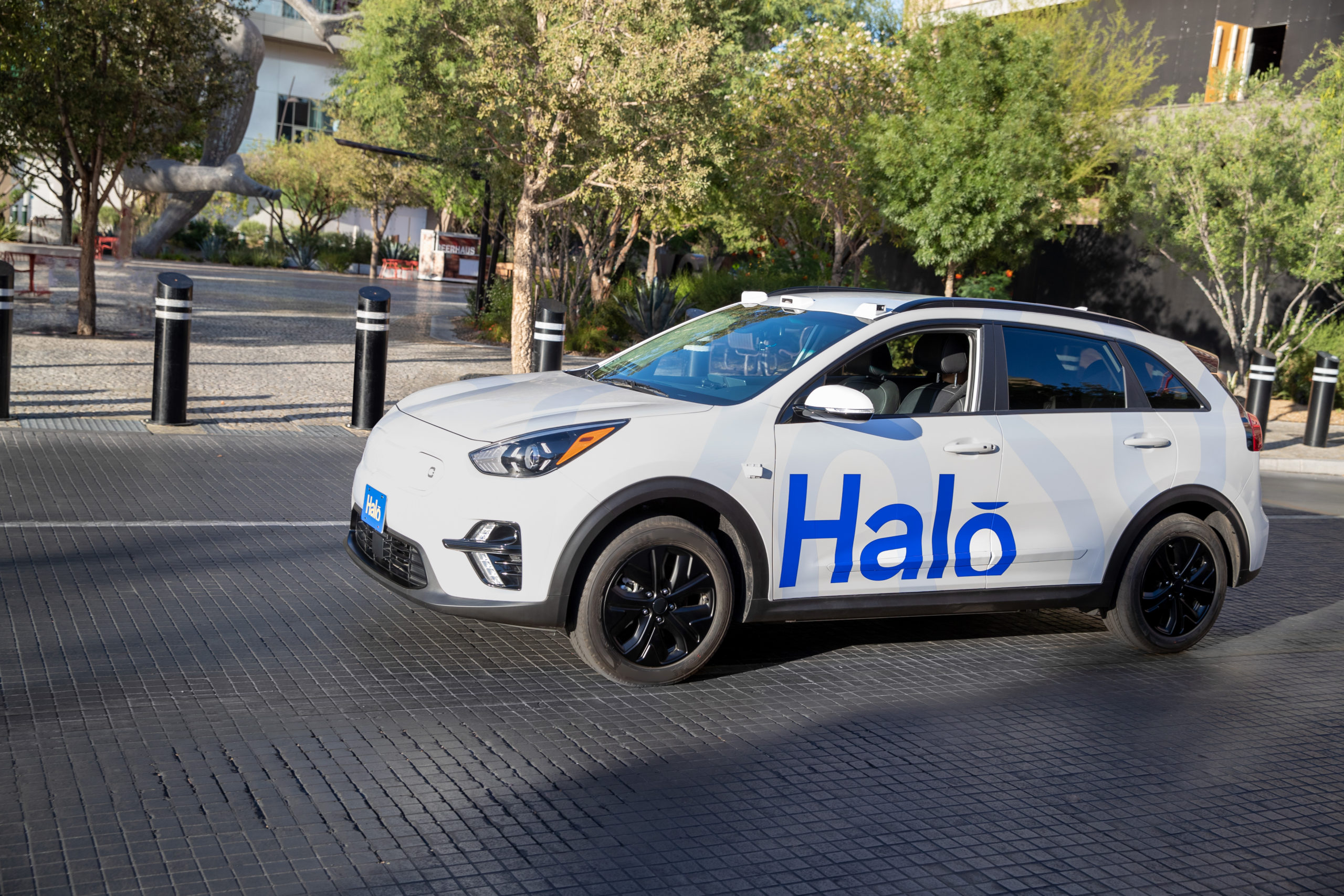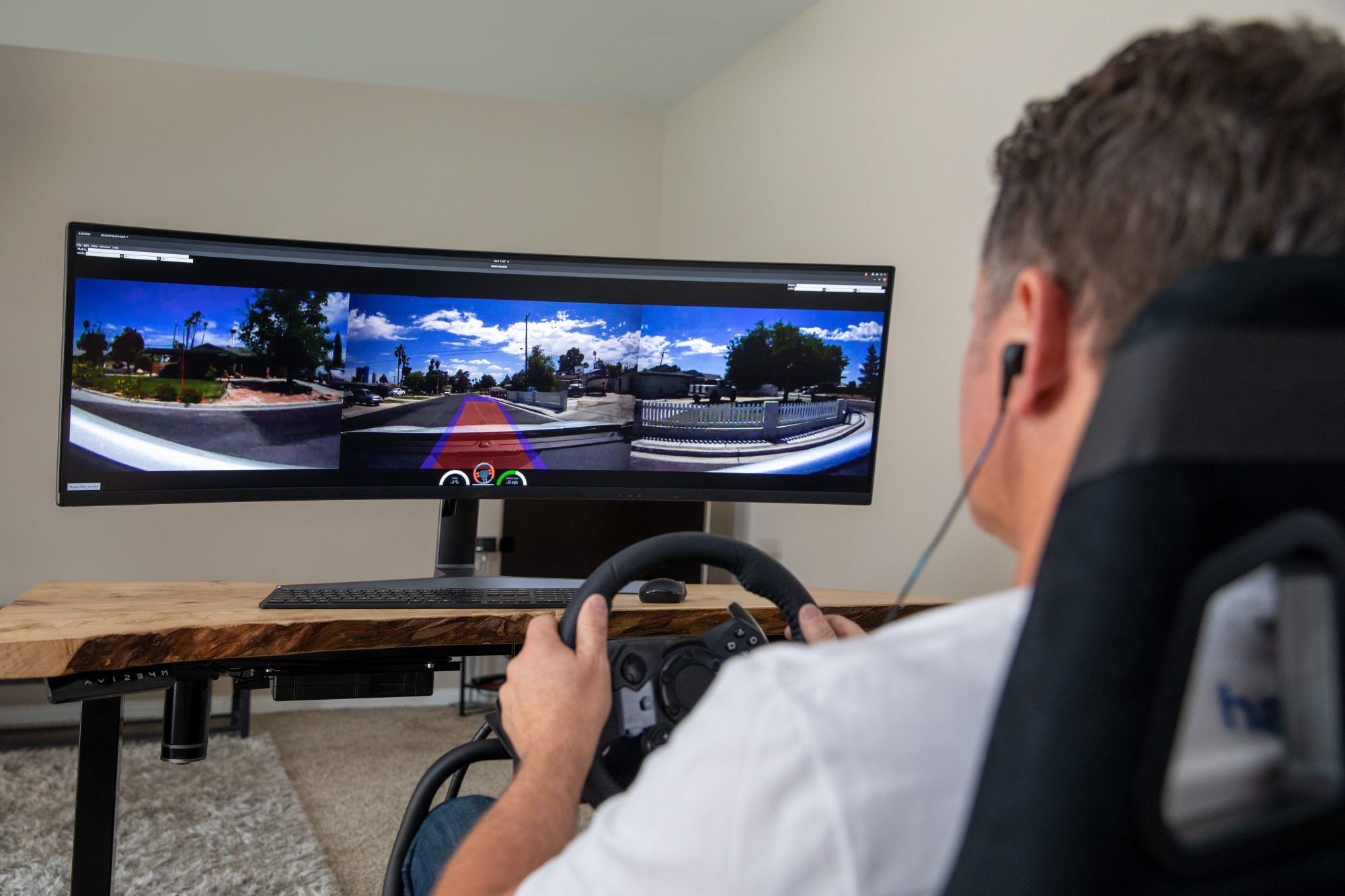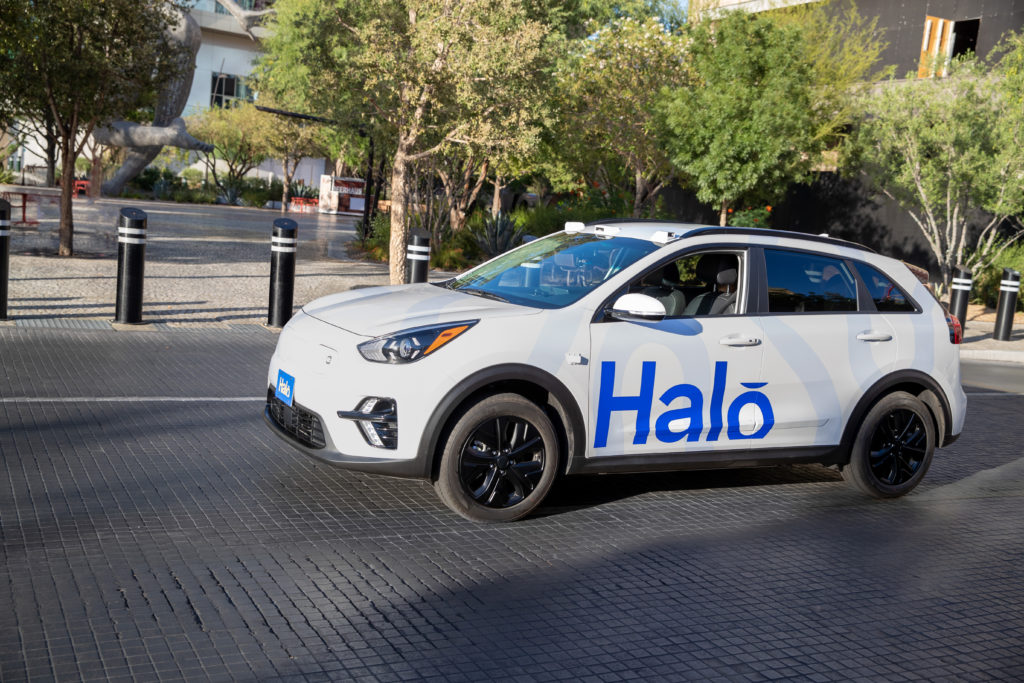
Never park again? That’s the future the team at Halo wants you to imagine with its new app-based rideshare service, which delivers a car to the user, lets them drive where they need to go, and then spirits the car away via remote control.
The T-Mobile-backed company announced plans Thursday to launch in Las Vegas later this year. Its system of nine cameras, radar, and ultrasonic sensors will be built into a fleet of modified Kia Niro EVs. So far, the remote-controlled cars have been testing on Las Vegas streets.
Halo’s technology is different from other autonomous car platforms like Waymo, Cruise, and Zoox. Instead, picture something more like a mix between Uber, Waymo, and Zipcar, with a human operator controlling the vehicle from afar when you’re not driving it. Pricing hasn’t been set yet, but it would have to be competitive with ride- and car-sharing apps.
Halo CEO Anand Nandakumar envisions users ordering a car through its app, and waiting as the driverless Kia (or other models in the future) makes its way to the passenger. Instead of a rideshare driver’s car, or an autonomous car with a safety driver in the front, what shows up is an empty car, albeit one driven by an operator sitting at a distant control center, watching the road through the car’s cameras. With the Vegas launch, operators will also be in Vegas. But if the Halo concept expands, some operators could be driving cars in a different state.

Credit: halo / t-Mobile
Once the passenger is in the car, they take over driving. Using Halo becomes almost like a normal rental car experience, with no autonomous assistance. Once at the destination, the car goes back to remote mode and the operator drives it away. To someone walking by, it would look like the car is driving itself.
“The car disappears,” Nandakumar explained in a recent phone call. “You don’t have to worry about parking.”
Nandakumar sees this expanding beyond Las Vegas, and into other urban and suburban areas, and said he considers it an intermediate step on the way to full autonomy. “This will bridge a way to get there,” he said.
He’s worried that Level 4 and 5 technology (those are cars that don’t need a human driver, not even remotely) is taking too long to arrive, and public trust and understanding of autonomous vehicles is too low.
A study of 1,000 Americans last month from Lynx automotive security software found that 80 percent trusted a human driver over an autonomous one. Halo hopes to appeal to that 80 percent with its blend of remote operations and human driving.
To serve up the data required for all that remote control, T-Mobile is putting its 5G wireless network to work with Halo, which was developed in the telecommunication company’s 5G Open Innovation Lab. Remote-control access requires hyper-connectivity with minimal latency, since even a second of lag could be potentially catastrophic when the remote operator is performing tight maneuvers in traffic.
John Saw, T-Mobile’s EVP of advanced and emerging tech, called the Halo partnership a “unique 5G deployment.” It’s different from, say, accessing the high-speed network on a cellphone, which is how most people interact with the new broadband network.
Halo with its remote drivers will “eat up a lot of data” as its CEO noted. But at least you won’t have to circle the block looking for parking.







